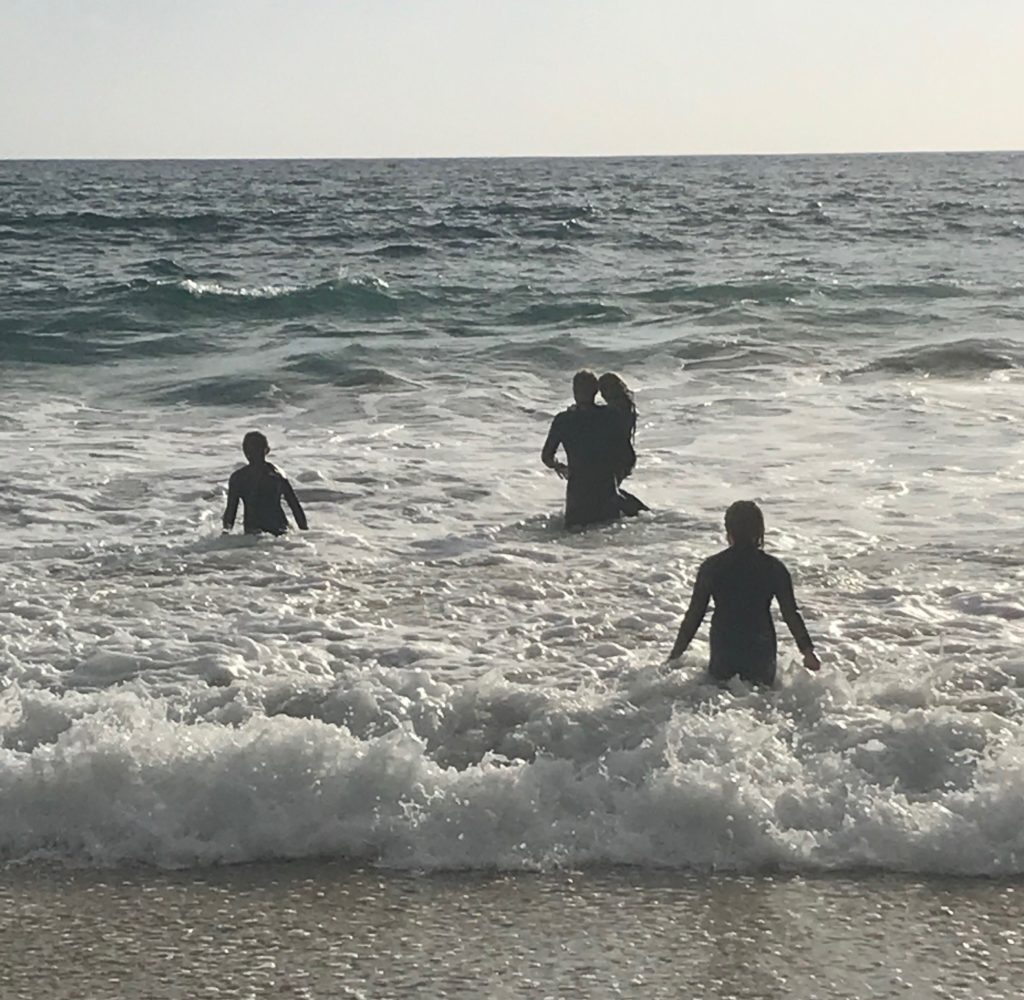On a recent family vacation, my daughters and I were enjoying a swim in the cool waters of the Pacific Ocean when we were caught in a powerful riptide.
Anyone who’s ever experienced a riptide knows that terrifying feeling of being swept out to sea. And with three young girls in tow, it would have been easy to let feelings of fear and panic take over.
But this wasn’t my first riptide.
Plan Ahead
Growing up, I spent a lot of time in the water. Whether it was swimming, boogie boarding, or surfing, the ocean has always had a special place in my heart.
And I’ve tried to share this love of the sea with my daughters.
I’ve also tried to prepare them for whatever the waters may bring. From spending time studying the conditions to finding a reference point on shore, plunging into the ocean with a plan can mean the difference between life and death.

The same is true in surviving the ups and downs of investing.
We know that over the long run, we can expect to earn positive returns. But turbulence is also part of the experience.
Recently, the S&P 500 index plunged more than 5% in just two days. For some, this decline was sudden and scary—like a riptide.
But this volatility is common. Since the lows of March 2009, the S&P 500 index has declined by 5% or more on 23 occasions. Meanwhile, that same index of U.S. stocks has risen nearly 400%.
Breathe
Armed with this knowledge, investors should be able to step back and relax.
But learning to stay calm in a riptide of any kind takes discipline.
Most people who die in riptides struggle to swim against the current, panic, get exhausted, and drown. They give in to fear, with disastrous results.
Similarly, investors who panic during down markets often pull money out or delay plans to invest more just when they should stay in. It’s ironic investors who gladly owned stocks when prices were higher and expected returns lower would want to sell
just days later when those same stocks’ prices were suddenly lower and expected returns higher.
By contrast, successful investors rely on evidence, if not experience, to guide their actions. They remember to breathe and stay disciplined during market setbacks.
Swim Parallel to Shore
And these temporary setbacks are just that—temporary. Like riptides, market downturns have limited breadth and duration.
But when markets are underperforming, many investors are tempted to “do something.” Anxious, some start checking their portfolio—monthly, weekly, even daily.
Does this help?
No—no more than thrashing about helps a swimmer caught in a riptide.
Consider that the S&P 500 index has fallen on 47% of all trading days. This means that if you check the stock market at the end of each day you’re likely to be unhappy about half the time.
If you can resist looking for a month, chances are stocks will be up. And the longer you wait, the better. Just 27% of annual and 20% of five-year periods have been negative for stocks. In other words, the easiest way to improve the odds you’re happy with the stock market is to check it less frequently.
If you must look, keep in mind market turbulence won’t pull you under the water or take you out to sea—it is simply taking you for a ride.
Instead of panicking during periods of low or negative performance, accept that short-term losses and downturns will happen, and swim parallel to shore until the current releases its grip.
Back on Shore
Ultimately, my daughters and I made it safely back to shore by being prepared, staying calm, and swimming with the current. After paddling sideways out of the riptide, we kept floating for hours, enjoying our time playing in the waves.
Like riptides, stock market fluctuations are inevitable—and normal. By focusing on what we can control, we can not only survive, but thrive.
